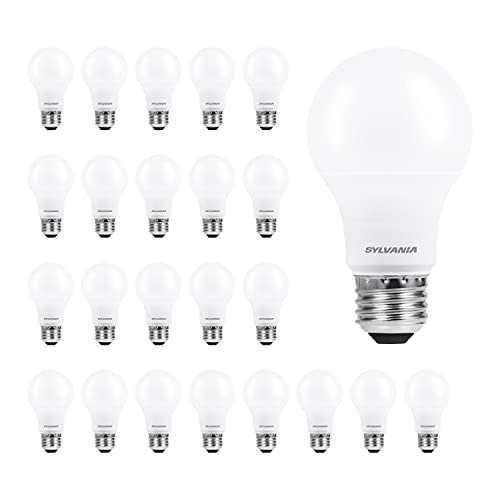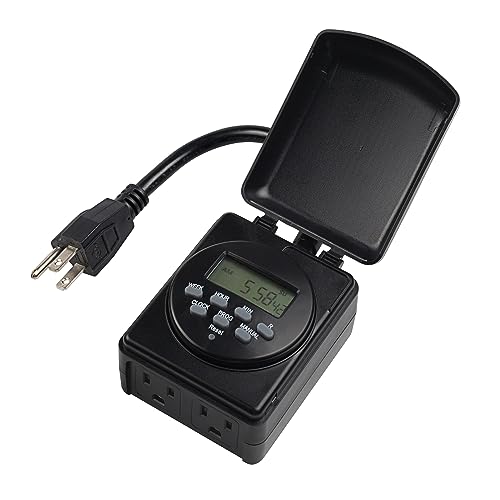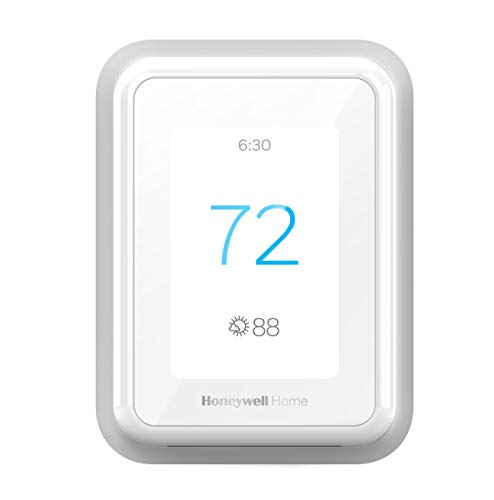Welcome to our blog post on “10 Easy Ways to Conserve Energy at Home”. We understand the importance of taking small steps towards energy conservation. Not only does it benefit our environment by reducing our carbon footprint, but it also helps us save money on our monthly utility bills. In this article, we will share with you some simple yet effective practices that you can easily implement in your daily routine. By making these changes, we can collectively make a significant impact on our environment and our wallets. So, let’s get started on this journey towards a more energy-efficient home!
Top Energy-Saving Books for a Sustainable Future
1. Switch to LED Bulbs
Switching to LED bulbs is one of the easiest and most effective ways to conserve energy at home. By replacing traditional incandescent bulbs with energy-efficient LED bulbs, you can significantly reduce your energy consumption and enjoy a multitude of benefits. In this blog section, we will explore why LED bulbs are a smart choice and how they can make a positive impact on your energy usage.
Energy Efficiency and Cost Savings
LED bulbs are highly energy-efficient, using up to 80% less energy compared to traditional incandescent bulbs. This means that not only do LED bulbs consume less electricity, but they also produce significantly less heat. These energy savings can have a significant impact on your utility bills, helping you save money in the long run.
Longevity and Durability
LED bulbs have a remarkably long lifespan, typically lasting up to 25 times longer than incandescent bulbs. This exceptional longevity means fewer bulb replacements and less waste generated. LED bulbs are designed to withstand frequent switching on and off, making them ideal for areas that require frequent lighting adjustments, such as hallways or bathrooms.
Brightness and Quality of Light
LED bulbs produce bright and high-quality light, with various shades and color temperatures available to suit different preferences and needs. Unlike traditional incandescent bulbs, LED bulbs do not emit a significant amount of UV or infrared radiation, making them safer and more comfortable to use.
Environmental Benefits
By switching to LED bulbs, you contribute to reducing greenhouse gas emissions and the carbon footprint associated with energy production. LED bulbs consume less electricity, thus decreasing the demand for energy from power plants that often rely on fossil fuels. Additionally, the extended lifespan of LED bulbs ensures that fewer bulbs end up in landfills, contributing to a more sustainable environment.
Key Benefits of LED Bulbs:
To summarize the advantages of LED bulbs, here are some key points:
- Energy-efficient: Use up to 80% less energy than traditional incandescent bulbs.
- Cost-saving: Lower your electricity bills and enjoy long-term savings.
- Long lifespan: Last up to 25 times longer than incandescent bulbs.
- Durability: Designed to withstand frequent switching on and off.
- Bright and high-quality light: Various options available to suit different needs.
- Environmental-friendly: Reduce greenhouse gas emissions and waste generation.
Make the switch to LED bulbs today and start enjoying the benefits of energy efficiency, cost savings, and environmental sustainability. With LED bulbs, you can illuminate your home while making a positive impact on the planet.
2. Unplug Electronics When Not in Use
Many electronic devices continue to consume energy even when they are turned off or in standby mode. This phenomenon, known as “vampire power” or “standby power,” accounts for a significant portion of wasted energy in homes and offices. By simply unplugging these devices when they are not in use, you can make a positive impact on both the environment and your energy bills. Let’s explore why unplugging electronics is important and how you can implement this energy-saving practice.
Understanding Vampire Power Consumption
The term “vampire power” refers to the electricity that is drawn from the power grid by electronic devices even when they are not actively being used. This happens because many devices remain in a standby mode or are designed to be ready for quick use at any time. This constant trickle of power consumption adds up over time, leading to unnecessary energy waste.
Some key points to understand about vampire power consumption include:
- Vampire power can account for up to 10% of a household’s energy usage.
- Even seemingly insignificant devices like phone chargers, coffee makers, and televisions contribute to this power drain.
- Standby power consumption can vary among different devices, with older electronics usually consuming more power than newer, energy-efficient models.
The Benefits of Unplugging Electronics
Unplugging electronics when they are not in use offers several key benefits:
- Energy Savings: By disconnecting devices completely, you can eliminate the standby power consumption associated with them. This not only helps reduce your carbon footprint but also saves you money on your energy bills.
- Extended Product Lifespan: Leaving devices plugged in all the time exposes them to potential power surges and electrical fluctuations. By unplugging them when not in use, you protect your electronics from these risks and increase their overall lifespan.
- Fire Prevention: Electronics that are continuously connected to a power source, particularly those with faulty wiring or poor ventilation, are at a higher risk of overheating and causing fires. Unplugging these devices helps mitigate fire hazards and ensures the safety of your home or office.
Implementing the Unplugging Habit
Here are some practical tips to help you incorporate the habit of unplugging electronics into your daily routine:
- Use Smart Power Strips: These power strips are designed to detect when devices are in standby mode and automatically cut off power to them. This convenient solution eliminates the need to physically unplug each device.
- Create Reminders: It can be easy to forget to unplug devices, especially when you are rushing or have a busy schedule. Set reminders or alarms on your phone or use sticky notes as visual cues to prompt you to unplug electronics before leaving a room.
- Categorize Devices: Identify which electronics are frequently used and which ones are not. Categorize them accordingly, and prioritize unplugging the less frequently used devices to maximize energy savings.
Use Power Strips to Save Energy
When it comes to reducing our energy consumption, every little effort counts. One simple and effective way to conserve energy in our homes is by using power strips. In this blog section, we will discuss how utilizing power strips can help you easily turn off multiple electronics at once, eliminate standby power consumption, and ultimately save energy.
What are Power Strips?
Power strips, also known as surge protectors, are electrical devices with multiple outlets that allow you to plug in multiple devices simultaneously. They come in different shapes and sizes, ranging from basic strips to more advanced models with additional features.
Turning Off Multiple Electronics with Ease
By plugging your devices into a power strip and flipping the switch off, you can easily turn off multiple electronics at once. This is particularly convenient for appliances that are connected in clusters, such as your entertainment center, workstation, or kitchen area. Some power strips even come with remote controls or smartphone apps, adding an extra layer of convenience to managing your electronics.
Eliminating Standby Power Consumption
Did you know that many electronic devices continue to consume energy even when they are turned off? This is known as standby power consumption, also referred to as vampire power. Standby power can account for a significant portion of your overall energy usage, especially if you have a large number of devices connected.
Using power strips can effectively eliminate standby power consumption. When you turn off the power strip, it cuts off the electricity supply to all the devices connected to it, ensuring that there is no wasted energy being consumed in standby mode.
Benefits and Key Points to Consider
There are several important benefits and key points to consider when using power strips:
- Convenience: Owning and using power strips makes it effortless to turn off multiple electronics with just a flip of a switch.
- Energy savings: By eliminating standby power consumption, you can reduce your overall energy usage, which translates to lower energy bills and a positive environmental impact.
- Safety: Power strips also provide surge protection, safeguarding your electronics from power surges and potential damage.
- Organization: Utilizing power strips can help declutter your space by minimizing the number of cords and outlets you need.
- Smart power strips: Advanced power strips have built-in features such as timers, motion sensors, or current sensing outlets that automatically shut off power to devices when they are not in use, maximizing energy savings.
Making the Switch
If you haven’t already done so, consider incorporating power strips into your daily routine. Not only will they simplify the process of turning off multiple electronics, but they will also contribute to your ongoing efforts in reducing energy consumption.
Switching to power strips is a small change that can have a big impact on your energy usage and overall environmental footprint. By taking this simple step, you can join the movement towards a more energy-efficient and sustainable future.
Choose power strips wisely, taking into account the number of outlets you need, surge protection capabilities, and any additional features that align with your specific requirements.
Remember, it’s the little changes that add up to make a significant difference!
Adjust Thermostat Settings
One of the easiest and most effective ways to optimize your home’s heating and cooling system is by adjusting the thermostat settings. By making a few simple changes, you can reduce energy usage and save money on your utility bills. In this blog section, we will explore the benefits of adjusting your thermostat, provide tips on how to do it effectively, and discuss the advantages of using a programmable thermostat.
Lower the Temperature in Winter
During the winter months, lowering the temperature on your thermostat can have a significant impact on your energy consumption. Here are some key points to consider:
- Benefits:
- Reduces energy usage and lowers heating costs.
- Improves comfort by preventing excessive heat.
- Promotes energy conservation and reduces your environmental footprint.
- Recommended settings:
- Set the thermostat to around 68°F (20°C) during the day when you are active.
- Lower the temperature by a few degrees at night or when you leave the house for an extended period.
- Make use of warm clothing, blankets, and insulation to stay cozy.
Raise the Temperature in Summer
Similarly, during the hot summer months, raising the temperature on your thermostat can help conserve energy and keep your cooling costs under control. Consider the following details:
- Benefits:
- Reduces energy consumption and saves money on air conditioning.
- Maintains a comfortable indoor environment without overcooling.
- Minimizes strain on your cooling system and extends its lifespan.
- Recommended settings:
- Aim for a temperature around 78°F (25°C) when you are at home and active.
- Raise the temperature a few degrees when you are away or during times when cooling isn’t necessary (e.g., evenings).
- Use ceiling fans or portable fans to enhance comfort without relying heavily on air conditioning.
Programmable Thermostats for Automatic Adjustments
While manually adjusting your thermostat can be effective, using a programmable thermostat takes the guesswork out of temperature control and offers additional benefits. Consider these advantages:
- Energy savings: Programmable thermostats allow you to set different temperature settings for various times of the day, matching your lifestyle and preferences. This ensures optimal comfort while reducing energy usage when you’re not home or during sleep hours.
- Convenience: Once programmed, the thermostat will automatically adjust the temperature, saving you from the hassle of constant manual adjustments.
- Cost savings: By using a programmable thermostat, you can potentially save up to 10% on your annual heating and cooling costs.
Here’s a quick comparison of different types of thermostats:
| Thermostat Type | Key Features |
|---|---|
| Manual Thermostat | Basic temperature adjustment |
| Programmable | Pre-set schedules for |
| Thermostat | automatic temperature control |
| Smart Thermostat | Wi-Fi connectivity, |
| smartphone control, | |
| energy usage monitoring |
In conclusion, adjusting your thermostat settings can significantly affect your home’s energy consumption. By lowering the temperature during winter and raising it during summer, you can enjoy comfort while saving money on heating and cooling. Consider using a programmable thermostat for added convenience and energy savings. Start making these simple changes today to reduce your impact on the environment and enjoy lower energy bills.
Achieve energy savings and make a positive impact on the environment with these simple tips
In conclusion, by following these 10 easy ways to conserve energy at home, we can achieve both environmental and financial benefits. By making small changes such as using LED bulbs, unplugging electronics, and adjusting thermostat settings, we can make a significant impact on energy conservation. It is important for us to make a conscious effort to conserve energy and contribute to creating a sustainable future for ourselves and future generations.
















